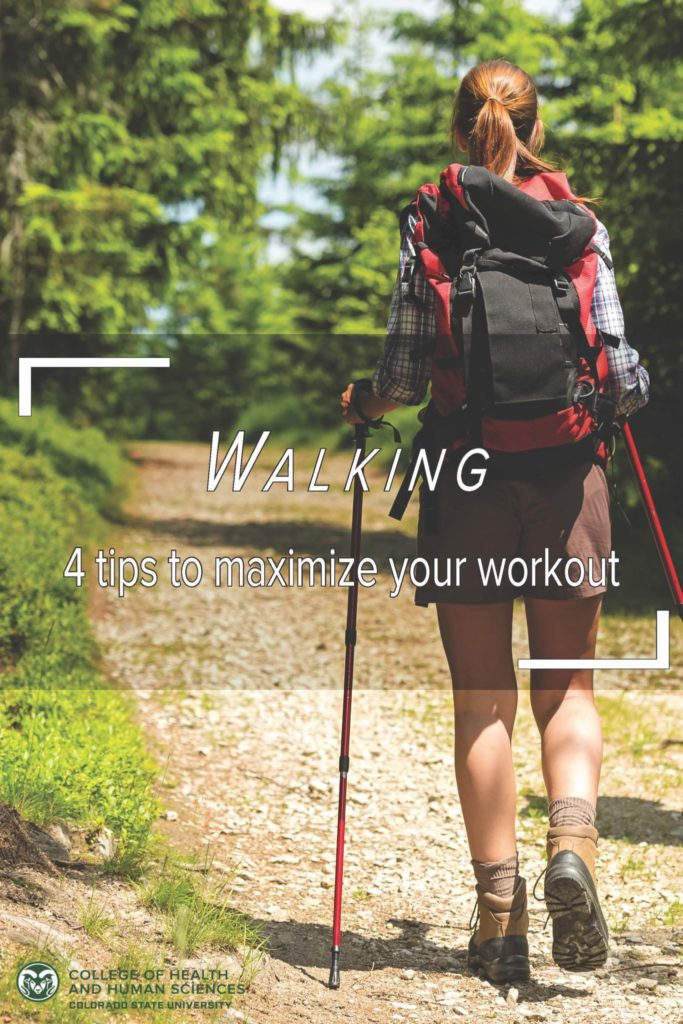By Kimberly Burke
In a day and age where we have Barre, Yoga, Cross-fit, Zumba and so much more, all as forms of exercise it can seem like sticking to simpler forms of exercise might not be enough. But what about good old-fashioned walking? As probably the most basic form of exercise, walking is still a great way to be active and positively impact health. Here are some of benefits and tips for walking.
 1. Walking at a brisk pace can promote weight loss or assist in weight maintenance, increase bone mineral density, muscle mass, and outlook on life. Brisk walking is classified as a moderate intensity exercise, which we should try to aim for 3-5 times a week for 30-60 minutes. To truly be brisk, it should cause you to be breathing harder than normal and the pace allows for an increase in heart rate. Think of being able to still talk, with perhaps a pause here or there for breath, but you can’t burst into song.
1. Walking at a brisk pace can promote weight loss or assist in weight maintenance, increase bone mineral density, muscle mass, and outlook on life. Brisk walking is classified as a moderate intensity exercise, which we should try to aim for 3-5 times a week for 30-60 minutes. To truly be brisk, it should cause you to be breathing harder than normal and the pace allows for an increase in heart rate. Think of being able to still talk, with perhaps a pause here or there for breath, but you can’t burst into song.
2. Be sure to treat your walking excursion like a workout and plan for a warm-up, conditioning and cool down, with stretching. Try to use the first 5-10 minutes at lighter easier pace. Continue on to the next 10-30 minutes at a brisk walk, using another 5-10 minutes at the end to slow down. And consider a 5-10 minute session of stretching, using a nearby rock, wall, or tree to assist. When time allow you can do all of these for a 25-50 minute workout, when time doesn’t allow feel free to shorten segments as needed. Always remember 10 minutes is better than nothing!
3. Along with physical, there are mental benefits to walking. In one Stanford study, researchers found that walking increased creativity; they speculated that walking helps with the free flow of ideas. It’s been found that walking also increases mood by promoting outcomes of vigor, attentiveness and self-confidence. Walking in nature had its own separate benefits of decreasing feelings of negativity and ruminating on negative experiences.
4. There are also some great ways to adjust your walking workout. In addition to playing around with speed to enjoy easy going or brisk walks, you can also consider the use of a treadmill (or nature) inclines. Applying an increase in the incline can help to increase the intensity. One can also use the principles of interval training, by alternating walking faster or slower for a given duration or ratio like 5 minutes of fast walking with 3 minutes slower of walking. You can also consider the addition of light weights, either to hold, or at a slower pace to add in upper body strength moves like the biceps curl, shoulder press, and/or overhead triceps extensions.
When you’ve got the time, interest and money for the gym or classes, have at it and try a great new Zumba class. When you’re looking for an easy and time efficient exercise, don’t forget about going out for a walk.
Kimberly Burke is the director of the Adult Fitness Program at Colorado State University, an outreach program through the Department of Health and Exercise Science. Adult Fitness offers exercise opportunities for employees of CSU as well as community members, while providing hands-on learning experiences for health promotion students. To learn more, see the Adult Fitness Program website.